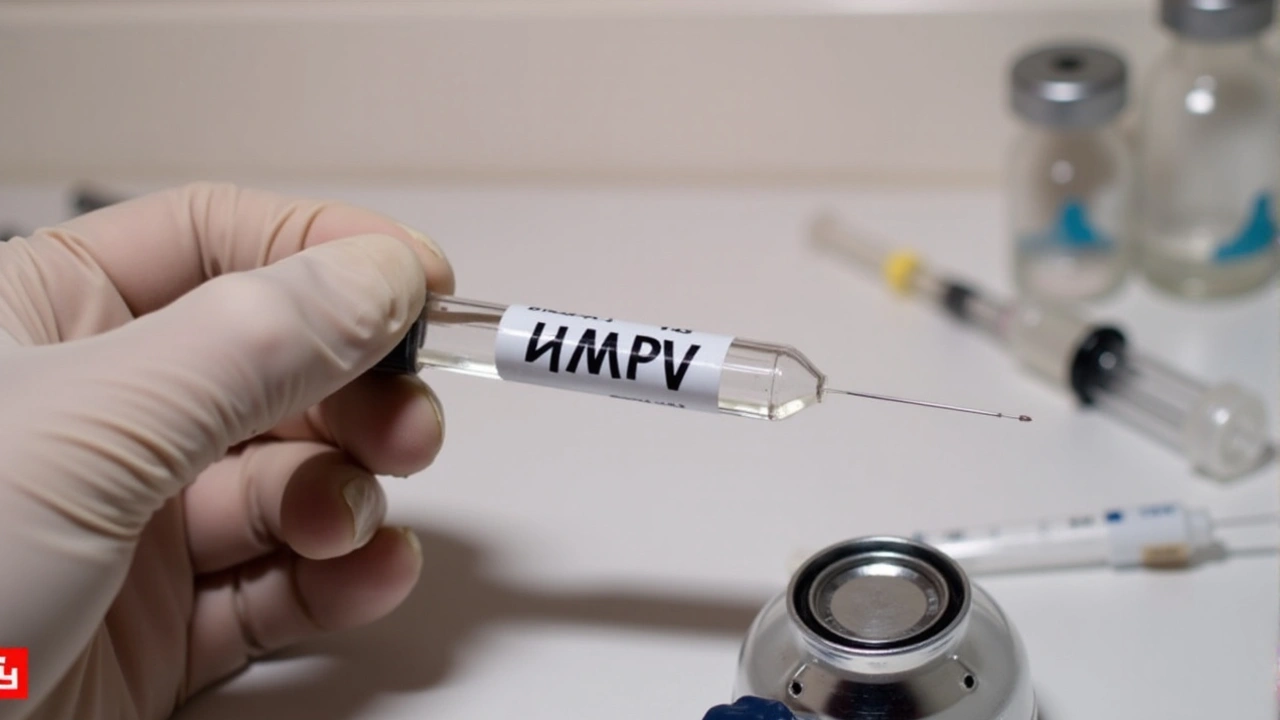What Is Human Metapneumovirus?
The Human Metapneumovirus (HMPV) is a significant contributor to respiratory illnesses around the world. This virus, which bears similarities to the common flu, has symptoms ranging from a runny nose and a sore throat to fever and cough. However, unlike the flu, HMPV presents a higher risk of developing into more severe conditions in certain populations. Most notably, children, the elderly, and individuals with weak immune systems are most susceptible. The virus's propensity to affect these groups often leads to complications like pneumonia and bronchiolitis, rendering it a public health concern, especially during peak seasons. Recent data from China has shown an increase in HMPV cases, emphasizing the need for increased vigilance and awareness.
The Challenge of No Existing Vaccine
One of the most pressing challenges surrounding HMPV is the absence of a vaccine. The virus's unpredictable nature and its ability to thrive year-round, albeit with higher infection rates in the colder months, make it difficult to manage. Countries like China have been particularly vigilant in tracking the virus, prompting their health agencies to initiate rigorous monitoring systems. This proactive approach aims to identify and address pneumonia cases that stem from unknown causes, potentially related to HMPV. Understanding these patterns not only aids in immediate response but also strengthens future prevention strategies.
The Role of Antibiotics and Treatment Options
A considerable misconception about HMPV, and viral infections in general, is the belief that antibiotics can serve as a cure. As HMPV is a virus and not a bacterial infection, antibiotics provide no relief or reduction in symptoms. The misuse of antibiotics can lead to resistance issues, diverting focus from effective treatments. Instead, addressing HMPV primarily involves managing symptoms. Physicians recommend remedies that range from rest, hydration, and over-the-counter medication to more intensive care for serious cases. In situations where respiratory distress becomes severe, hospitalization may be necessary. Supportive care, such as oxygen therapy, can provide relief and reduce health risks for susceptible patients.

The Importance of Preventive Measures
Prevention remains the most effective tool against HMPV. With no vaccine available, mitigating spread relies heavily on public awareness and hygiene practices. These include regular hand washing, wearing masks, particularly in crowded or enclosed environments, and avoiding close contact with individuals displaying symptoms. These actions, coupled with public health initiatives, can significantly lower transmission rates. Additionally, educational campaigns play a vital role in informing communities about the virus's nature and the necessity for vigilance, particularly during months with higher infection rates.
Global Impact and Surveillance Efforts
Globally, HMPV accounts for a significant percentage of respiratory illnesses. According to the Centers for Disease Control and Prevention (CDC), it remains a persistent health issue, affecting both developed and developing regions. Surveillance systems are crucial not just for immediate response but also for gathering data that can inform global health policies. The Chinese Center for Disease Control and Prevention's recent efforts underscore the importance of such systems. By tracking pneumonia cases and monitoring virus spikes, they aim to reduce the impact of HMPV during critical periods.
Understanding the Risks for Vulnerable Populations
The impact of HMPV on vulnerable populations cannot be overstated. Children under five, in particular, experience a higher fatality rate from HMPV-related respiratory complications. Data indicates that up to one percent of acute lower respiratory infection-related deaths in this age group are attributable to the virus. This statistic highlights the urgent need for responsive health systems and informed caregivers. Elderly individuals, especially those with pre-existing conditions, are similarly vulnerable. For these groups, early detection and treatment can be life-saving.
Collaborative Efforts in Combating HMPV
Collaborative efforts between researchers, healthcare providers, and international organizations are paramount in the fight against HMPV. Advancements in diagnostic techniques are making it easier to identify the virus, paving the way for timely interventions. Meanwhile, global health agencies are continuously advocating for more research to understand HMPV's pathogenesis and to develop effective vaccines. These efforts require sustained investment and collaboration across borders.

Conclusion
HMPV represents a formidable challenge to global health, one that requires a nuanced understanding and coordinated strategies. With antibiotics ineffective against this virus, the focus must shift towards prevention, symptom management, and continuous monitoring. For high-risk populations, awareness and proactive healthcare measures are crucial. As the scientific community pushes for breakthroughs in treatment and prevention, public awareness and adherence to preventive practices remain our best defense against the spread of HMPV.







Write a comment